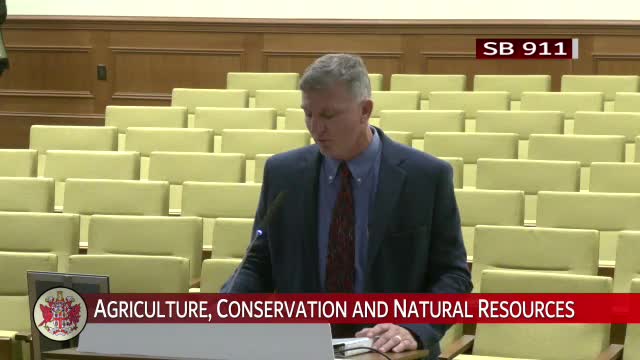Virginia stakeholders unite against controversial pesticide bill citing public health concerns
January 14, 2025 | 2025 Legislature VA, Virginia
This article was created by AI summarizing key points discussed. AI makes mistakes, so for full details and context, please refer to the video of the full meeting. Please report any errors so we can fix them. Report an error »

A proposed bill aimed at regulating aerial pesticide applications faced strong opposition from various agricultural and environmental groups during a recent Virginia government meeting. The bill, which would impose stricter notification requirements and a five-mile radius restriction for aerial spraying, was met with concerns from representatives of the Virginia State Determinants Association, Virginia Forest Products Association, and Virginia Poultry Federation, among others.
Eric Pauls, speaking for the Virginia State Determinants Association, expressed clear opposition, citing multiple reasons for their stance. Susan Seward from the Virginia Forest Products Association highlighted that the bill's prohibitions would significantly impact the use of herbicides and fungicides essential for forestry operations, particularly in aerial applications for pine tree planting.
Hobie Bowen of the Virginia Poultry Federation echoed these concerns, noting that many poultry growers have diversified operations that would be adversely affected. Larry Nichols from VDOX added that the bill would impose additional costs on the agency responsible for processing notifications, complicating the implementation of the proposed regulations.
The meeting also addressed the potential impact on public health, with representatives from the Virginia Mosquito Control Association warning that the five-day notification period could allow immature mosquitoes to mature and pose health risks before treatments could be applied. They argued that the proposed five-mile buffer was excessive compared to standard practices.
Despite the passionate arguments against the bill, Senator Stanley defended its intent, emphasizing the importance of protecting honeybee populations and agriculture. However, the committee ultimately voted to pass the bill by indefinitely, reflecting the strong consensus against the proposed regulations.
As discussions continue, stakeholders are hopeful for a resolution that balances agricultural needs with environmental protections. The meeting underscored the complexities of agricultural regulation and the need for collaborative solutions moving forward.
Eric Pauls, speaking for the Virginia State Determinants Association, expressed clear opposition, citing multiple reasons for their stance. Susan Seward from the Virginia Forest Products Association highlighted that the bill's prohibitions would significantly impact the use of herbicides and fungicides essential for forestry operations, particularly in aerial applications for pine tree planting.
Hobie Bowen of the Virginia Poultry Federation echoed these concerns, noting that many poultry growers have diversified operations that would be adversely affected. Larry Nichols from VDOX added that the bill would impose additional costs on the agency responsible for processing notifications, complicating the implementation of the proposed regulations.
The meeting also addressed the potential impact on public health, with representatives from the Virginia Mosquito Control Association warning that the five-day notification period could allow immature mosquitoes to mature and pose health risks before treatments could be applied. They argued that the proposed five-mile buffer was excessive compared to standard practices.
Despite the passionate arguments against the bill, Senator Stanley defended its intent, emphasizing the importance of protecting honeybee populations and agriculture. However, the committee ultimately voted to pass the bill by indefinitely, reflecting the strong consensus against the proposed regulations.
As discussions continue, stakeholders are hopeful for a resolution that balances agricultural needs with environmental protections. The meeting underscored the complexities of agricultural regulation and the need for collaborative solutions moving forward.
View full meeting
This article is based on a recent meeting—watch the full video and explore the complete transcript for deeper insights into the discussion.
View full meeting
